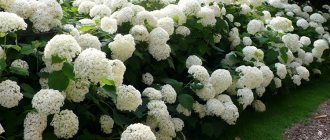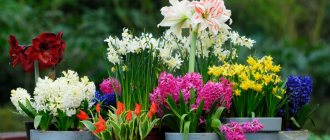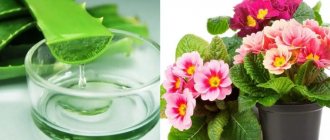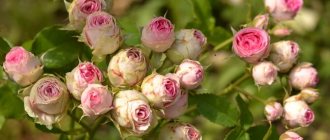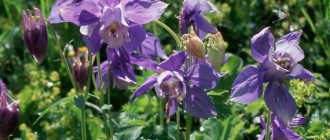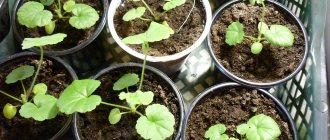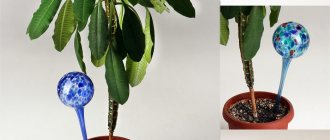Varieties of floral paints
Bouquet designers use the most convenient ways to implement their own and client’s creative ideas. Among them are the so-called “folk” ones, and, of course, professional ones. These include absorbable floral paints in powder form and spray paints.
A solution for watering is prepared from powdered paints; flower heads can be dipped into it or stems can be placed along which the colored solution will rise to the petals and give them the desired color. The method is excellent, but the result is sometimes disappointing: Not all petals are equally colored, or the wrong shade is obtained.
- The biggest advantage of spray paint is its opacity, so the coloring result will be exactly as expected.
- And the drying time of spray paint is short - from 10 to 40 minutes, depending on the manufacturer’s recommendations and the conditions in which the work is carried out.
Spray paint
Aerosol paint will satisfy the most exotic needs, as it has a wide color palette: shades of red, blue, green, yellow and even black.
This variety is complemented by special metallized paints - gold, silver, bronze. What’s important is that spray paint is absolutely harmless to flowers.
- Sprays can be universal, that is, they can be used not only for coloring flowers, stems and leaves of living and cut plants, but also used to decorate objects made from other materials.
- Fluorescent paints are also popular, and the effect lasts quite a long time. In good lighting, the flower looks as usual, and begins to flicker and glow only with the onset of darkness.
Floral varnishes
Leaf spray varnish is used for decorative decoration of leaves and buds of freshly cut flowers. It gives greenery the so-called “marketable appearance” - the leaves shine, dust does not settle on them, the evaporation of moisture slows down, but at the same time no obstacles are created to photosynthesis.
Important: Leaf spray is not suitable for spraying on leaves that have hair.
Floral glitter spray is used as a finishing touch. Glitter, like paint, is also universal.
Glitter spray varnish can achieve interesting effects. Shimmering, sparkling sparkles will add charm and a sense of celebration to even the most unsightly plants and objects, arrangements of tree branches and dried plants.
Liquid glitter comes in monochrome - silver, gold, red - and in a multicolor mixture.
Can an orchid change color?
Karina Avseeva
Florist
Orchids of rich blue or light blue color are very popular and are often purchased as an interior design object. This is not a natural, but an artificial color.
Blue orchid
Unscrupulous sellers often use harmful ink, so the plant dies after flowering. To prevent this from happening, the crop is purchased either from a trusted supplier or colored independently.
The home dyeing technique involves the use of two methods:
- Through watering. It is considered gentle and safe, but the shade is not entirely natural and fades quickly. If you finish watering with the blue solution, the petals will soon return to their previous color. The more coloring pigment, the more durable the result, but the harm to the plant also increases. It is recommended to use only a special coloring composition.
- Through injections. Allows you to get a more natural and lasting shade that will please the eye, but it can greatly harm the crop. To minimize the risk of death of the specimen, the composition should be injected not into the root or stem, but into the peduncle. If suddenly the crop begins to die, just cut it off. How to change the color of an orchid to blue at home using this technology? Dilute the paint of the appropriate shade with warm water and inject it with a syringe.
This coloring is not suitable for bright varieties. The ideal option would be a white or pinkish orchid.
Interesting article: Description and cultivation of buttercup flowers.
Where else are floral sprays used?
Aerosols for flowers are great for a wide variety of decorative projects:
- Coloring dried flowers;
- Arrangement of compositions from artificial flowers;
- Dyeing cardboard, paper, wood, silk, shells, pine cones, moss, stone, metal, glass and ceramics.
Glitter and fluorescent sprays are also in demand by decorators and designers working in other areas. They are used in wedding decorations, they decorate New Year's compositions, stage props and crafts for the home.
Let the flower dry
Place the rose in a vase to allow it to dry. If the flower is not dark enough, let it dry completely and then repeat the dyeing process. While the rose is drying, you can paint other flowers if you need a bouquet. But be patient: if you use the rose while the paint is still wet, you risk staining your skin, clothing, and other items.
If you painted a live rose, make sure you fill the vase with water to prevent it from wilting. Dried roses do not need water.
What flowers are suitable for coloring?
To change color using powder paints, it is better to choose white or beige flowers - they can be given any shade.
Bright leaves can also be painted, for example, making the tips of the petals darker or lighter.
- Only sprays can radically change the color of dark petals.
- Fully blossomed flowers are usually chosen for painting, although no one forbids painting buds.
- The most commonly painted flowers are roses, dahlias, hydrangeas, daisies, chrysanthemums, daisies, and orchids.
- Potted plants can also be painted, but it is not recommended to paint succulents during the flowering period.
How to change the color of flowers to any other at home?
You can do the coloring yourself using two main means - coloring pigments and special paints. Each method deserves special attention.
Using dye
The evaporation of water molecules causes heavy particles to settle in the petals, causing them to change color. This allows you to add food coloring in the desired shades to the liquid for coloring. The procedure is performed as follows:
- The stem is cut so that the plant can absorb the liquid with pigment as intensely as possible.
- Add 20 to 30 drops of dye to the liquid. The more, the brighter the shade will be. The main thing is not to overdo it. Otherwise it will not look entirely natural.
- Leave the culture in the solution until the buds acquire the desired shade.
Some flowers take color faster, while others, on the contrary, take longer. This must be taken into account.
How to change the color of flowers?
Floral paint
Professional (special) pigment is available in various forms, but most often as an aerosol. It is used by florists to color flower arrangements, wreaths, as well as bouquets and other themed decor.
The paint is applied in a few simple steps:
- spray the aerosol onto the petals, following the instructions;
- Water the flowers with tinted water so that the pigment lasts as long as possible.
Floral paint is suitable for changing the shade of both bouquets and potted crops. It is most effective for creating dark colors.
Technology for coloring freshly cut and potted flowers
It does not tolerate fuss, but at the same time it is so simple that even a child can handle the job. First you need to choose a suitable room, since the process is quite dirty: paint particles fall on surrounding things and objects. Then cover the work surface with film or newspapers, prepare a vase or other container in which the flowers will dry.
Important: Work with paint or varnish must be carried out at room temperature in a well-ventilated area.
Shake paint and varnish well before use. Do not spray on an assembled bouquet. Paint each flower separately, holding it at arm's length, since according to the instructions, the distance between the can and the object should be about 40 cm.
- The color intensity depends on the thickness of the paint layer. If the color does not seem bright enough, then the dyeing procedure must be repeated.
- Dry upright. Moving the vase to a dry, warm room will speed up drying.
How indoor flowers react to paint
Each variety of fresh flowers is a bright creation of Mother Nature herself. It was she who managed to give them a beautiful and unique color scheme. However, man, who completely unreasonably considers himself the king of nature, managed to get to these creations. At some point, a crazy thought flashed through his fevered brain: “Is it possible to paint a living flower some other color?” It turned out that it is possible. In this article we will not consider the advisability of repainting plants, but will simply tell you how this procedure can be carried out. In addition, we will try to find out how indoor flowers react to this or that paint.
How to paint dried flowers and artificial flowers
The technology is absolutely the same as in the case of living plants, although coloring with powder dye is cheaper. True, with dried flowers the powder does not always give the desired result.
There are two reasons for this: The heads usually have a brown tint, and some petals may be discolored or damaged, which will certainly appear after a budget coloring with floral powders.
Therefore, it is better to paint dried flowers with a spray, since only this guarantees 100% and even painting.
Coloring multicolor roses
The dye only adds color to the shade that is already there, but does not radically change the color. If you want the color to be exactly what you want, you should only use white roses.
Cut the stem at an angle. Use a sharp knife. Trim off all leaves, thorns and buds.
Now split the stem in half. Place the rose on a cutting board. Use a sharp blade to cut the stem lengthwise. Stop when you reach half the stem.
If your rose had a very thick stem, you can cut the stem into three or four pieces.
It’s good to wash often: myths about shampoo and hair care that only harm
A student at the Vietnam Police Academy shared how she takes care of her facial skin.
Why French children behave well: eight ways to raise them
If through carelessness you break the stem, cut it all to 12-15 cm and paint it one color.
Place the rose in a vase with clean water. Now fill 2-4 glasses with warm water. How many utensils you use depends on how many sections you cut the rose stem into. You will need one glass per section. Use warm water for coloring - roses absorb it faster than cold water.
Alternative dyeing methods
When there were no special paints for designers and florists, flowers were also painted. For freshly cut or live ones, beet juice and food coloring were used, which were dissolved in water.
The stems, cut at an angle of 45 degrees, were placed in this water for a day. To obtain a multi-colored seven-flowered flower, the stem was split and each part was placed in solutions of a different color.
Growing flowers were simply watered with this solution. This method is still used today, but compared to paint it has significant disadvantages:
- Not all flowers absorb pigment well, so the method is most effective when painting plants with porous stems;
- Inability to predict the result with cut plants;
- When watering is stopped, potted plants gradually return to their “native” color.
Fabric dyes were used for dried plants and other natural materials. They were dissolved in boiling water.
Floral paints fit perfectly on any surface. If just yesterday it was unclear how to repaint the base of your favorite sconce, which no longer “fits” into the updated interior, or update the frame of a vintage mirror, then today there is one universal answer - use spray paint for flowers.
Coloring as such
Before you decorate the flowers, you need to prepare the plants. For the best coloring, it is recommended to take white and light buds. The petals instantly absorb particles of the dye and acquire the desired color. Roses, tulips, daisies, and chrysanthemums are perfect. When dyeing with floral dye, it is important to choose a quality product. This can be done in a flower shop or on the Internet on a specialized website. The buds that have blossomed should be painted so that the product is evenly distributed over the surface of the plant.
The area to be painted is covered with film. The product is diluted in a basin or bucket. Add 20 g of technical alcohol. After immersing the buds for 10 seconds, carefully, without shaking, remove and rinse with cool, clean water. Remaining dye is removed.
Food coloring is diluted in water. After cutting the stems at an angle and tearing off unnecessary leaves, they put the plants aside for 3 hours without water. Then the bud is dipped in the dye and left again for 3-4 hours for complete coloring. Finally, the flowers are placed in water and the liquid is changed twice a day.
Using a spray when painting makes the process easier. It is enough to direct the stream at the plant, without immersing in the solution. It is important to protect surrounding objects from paint.
Photo of spray paint for flowers
DIY painting of artificial flowers
Experience of experts. Tatyana Izmailova Any experience is an EXPERIENCE, sometimes in the literal sense of the word. In the life of a decorator, there are often questions that seem insoluble at first glance, but the more difficult the task seems, the more interesting it is to solve it. This was the task for one of our weddings. Very easy-going, cheerful, not afraid of experiments guys came to us in the summer with a question about decorating their wedding. Everything would be fine, but the main flower was chosen gerbera, with a whole palette and variety of colors. Experience working with this living flower suggested that, if possible, it is better to use decorative flowers , preferably not inferior in beauty to living ones. The room that was to be decorated was not equipped with air conditioning, and it was impossible to predict the weather. We have already worked with Miss Flowery textile flowers , and their quality has always satisfied us, so the first thing we did was go to the website in search of the right flowers. But, unfortunately, out of the 5 gerbera colors we needed, there were only 2: orange and milky. We spent a month searching for gerberas. Either the cost was too high, or the quality of the gerberas was not satisfactory. 2 weeks before the wedding we got the idea to try painting flowers. The logic was simple: the flowers are fabric , which means they can be painted! We asked Svetlana if she had any experience in painting artificial flowers , but it turned out that she did not. We decided to take a risk. We urgently ordered a batch of trial colors. We purchased paint for dyeing fabric at a craft store. This is where the fun began: the creative process and the excitement of getting the result. A trial batch of milky gerberas was repainted in three colors: yellow, pink and red. We bought DYLON fabric paint in three colors: yellow, pink and supposedly red. Read the painting instructions. Dilute the dye as shown on the label.
The process of painting artificial flowers was very simple. At first we tried to paint the petals with a brush, but the process would take too long! As a result, we found a very simple method: we simply dipped the head of the flower, core down, directly into a jar of diluted paint, waited a little while for the paint to drain, slightly shook off the remaining paint and set the flower to dry in a piece of polystyrene foam.
After waiting a little, we dried the flowers with a hairdryer. The red paint was diluted first and, to our regret, we could only get the pink color of the gerbera and from the yellow paint the yellow gerbera. The light shades turned out great, but there was still the question of the red gerbera.
And here the solution was found quite quickly, the experience of creating paintings using the batik technique helped. We took concentrated Jacquard batik dye and used the same dipping method to get a great red color.
Batik paint Jacquard is a professional art paint, it has a wide palette, rich colors when overlapping even from the first layer.
The paints can be mixed with each other to achieve any desired shades. Plus, it is very durable and can withstand the sun very well, which is important when using decorative flowers outdoors.
Does not require special fixation if you dry the flowers with a hairdryer. The wedding day has arrived and all the flowers have taken their places. None of the guests guessed that at the wedding there were not only real, but also artificial flowers .
Flowers also served as decoration for the arch at the exit registration.
After registration, we decided not to dismantle the arch decoration and left it for the evening photo shoot. The wedding was close to the water, and the flowers were wet from dew. Without paying attention to this, we put everything in a common box. A surprise awaited us the next day when some of the flowers colored each other. But this only happened with gerberas that were painted with DYLON paint. Apparently it didn't stick to the polyester very well. Red flowers, painted with batik paint, felt great. Nothing happened to them. We soaked the heavily soiled flowers in bleach, and they acquired their original milky appearance))) Conclusion! The main thing is to choose the right paint for the right material. Our creative searches helped us cope with the task, and we gained enormous experience in getting out of any situation. © Tatyana Izmailova, “Tatiana Izmailova Decor and Floristry Studio” Photo of the banquet hall and outdoor ceremony: Kira Yudina
Mix colors to get the desired shade
If not all dyes have been purchased, then the desired color can be obtained from the available ones:
- blue paint + yellow will give bright greens;
- purple + red = lilac;
- red + yellow = orange;
- red + blue, purple + yellow + blue = dark green.
Light pink, light blue and other similar shades are obtained.
If the finished dye is diluted with ordinary settled or boiled water.
Artificial flowers made of fabric: what do we prefer?
Most often, craftswomen use the following dye to create the required shade for the buds and stems of artificial flowers:
- Red: magenta (aka madolent), photographic paint of purple and scarlet shades, ink, ink, radom, cherry or beet juice;
- Yellow: aniline yellow, again photo paints, akrihin or yellow radomin, you can use carrot juice;
- Blue: aniline, photo paint or medical blue;
- Purple: ink, ink, photo, radomin, aniline greens or asparagus juice;
- Gray and black shade: aniline mascara.

